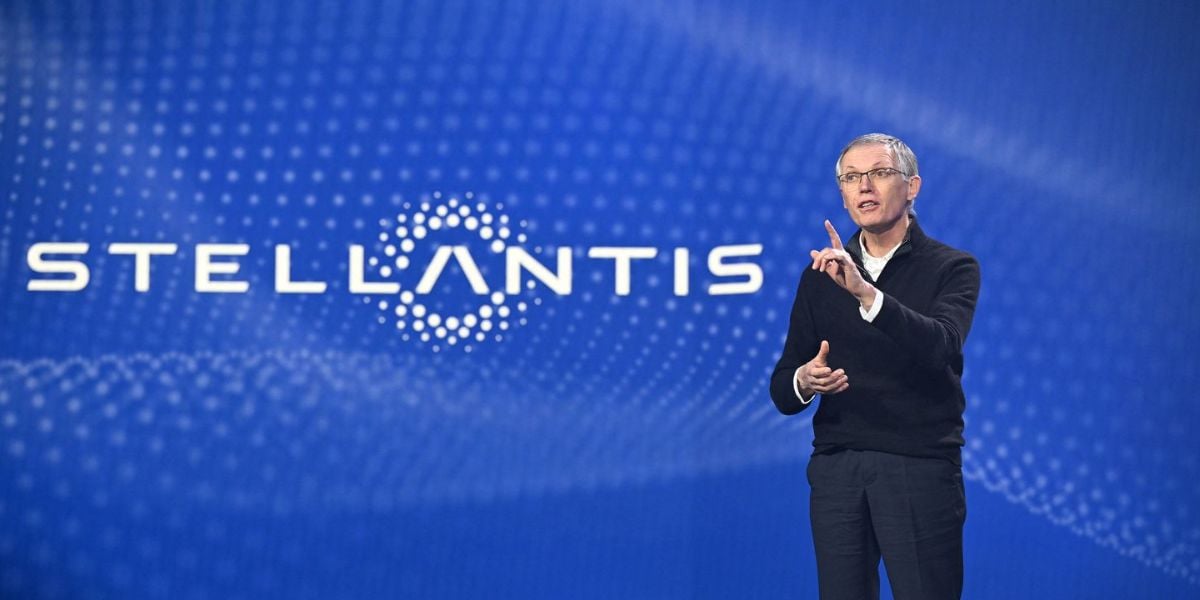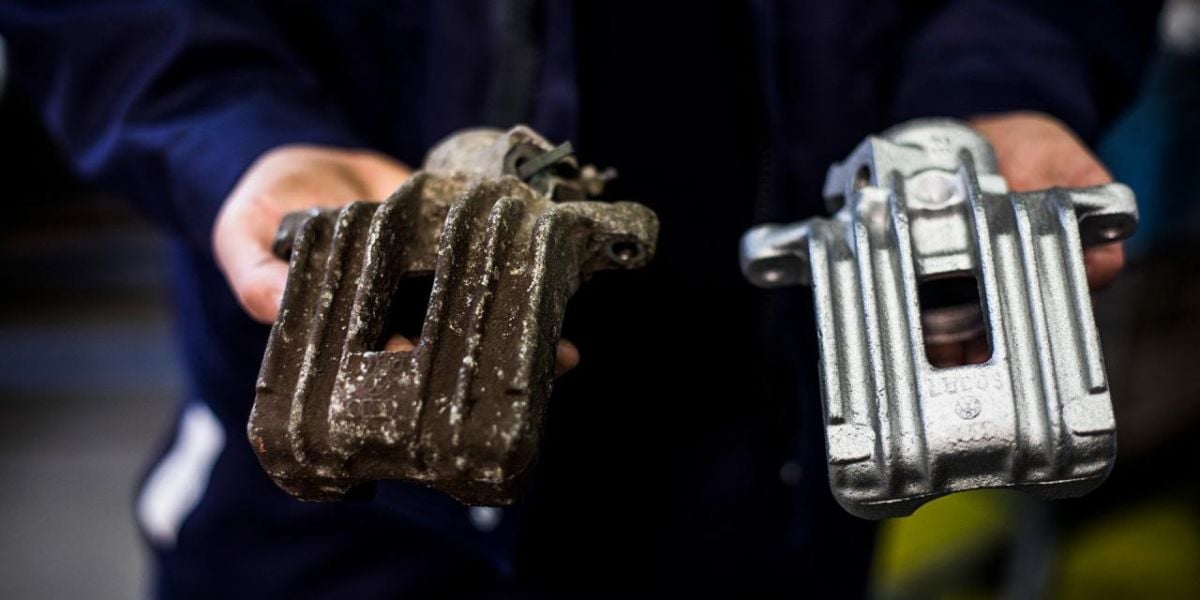Stellantis to showcase sustainable 4R strategy and remanufacturing innovations at Rematec Amsterdam
Alison Jones is Senior Vice President of Global Circular Economy at Stellantis. In her position, she supports the company's environmental commitment and its goal to achieve €2 billion in revenues by 2030 as part of the "Dare Forward 2030" strategic plan. Stellantis will exhibit at Rematec Amsterdam 2023 with SUSTAINera, the label dedicated to its Circular Economy activities, products and services.
Stellantis has created a 360-degree business model centered around the 4R strategy based on circular economy principles: reman, repair, reuse and recycle to conserve resources. The strategy is implemented through remanufacturing parts across 37 product lines, covering 13,000 part numbers, repairing worn or defective parts and reinstalling them in the same vehicles, and reusing over 5 million multi-brand parts from end-of-life vehicles. These reused parts are sold through the B-Parts e-commerce platform in 155 countries. In addition, the company recycles production scraps and parts from end-of-life vehicles, collecting more than 1.7 million parts for recycling in 2022.
I recently sat down with Jones to discuss with her the company’s views on remanufacturing and sustainability.
Why is remanufacturing important to Stellantis?
We're targeting Carbon Net Zero by 2038 and we strongly believe in sustainability. And of course, remanufacturing is a key part of achieving those objectives. What [remanufacturing] does is keep the products and their materials in use for longer, it maintains their value in the economy and reduces the demand of new raw materials, lowers the energy consumption, and reduces the CO2 emissions which would be instead needed to manufacture new products from scratch. It offers to our customers affordable, sustainable solutions of the same quality and that's why it's so important. It's such a key pillar of what we do in the circular economy.
How does remanufacturing fit into Stellantis' overall sustainability strategy?
Last year, we launched the circular economy business unit for Stellantis globally, and remanufacturing fits into the Stellantis sustainability strategy because it is part of this new consumption and production model which implies a circular use of resources and products.
Remanufacturing begins with the design of vehicles and their components. By designing more vehicles and parts with remanufacturing and repair in mind, we can extend their life cycle as much as possible. How can we design them to be able to do that? And then also, how can we put more recycled content into our vehicles and parts in the first place? So that's the design.
As for our circular economy responsibility, it comes back to the vehicle when we're doing reconditioning, fixing, making vehicle parts last longer and then remanufacturing and continuing to recycle. So, our sustainability plan for the circular economy covers all of that at Stellantis. We're also mindful of not wasting water and energy, which is mainly tackled within our manufacturing since that's the biggest area we use them. We're pretty excited about what we've started here. Our sustainability strategy for the circular economy includes all of that.
How does Stellantis collaborate with other companies when producing cars with an eye towards remanufacturing?
We're currently working with partners who have vehicles on the road. These partners provide us with the necessary components and materials. We collaborate with remanufacturing partners and suppliers who are experts in various technologies. Our strong partners supply us with remanufactured products, which we complement with our in-house efforts.
Additionally, we cooperate with suppliers through our dealer networks and collaborate with them to obtain the required materials for resale. This is crucial to ensure we have enough materials to work with. Our design and engineering team, supported by external collaborators, focuses on two main areas: increasing the percentage of recycled material used and improving the overall sustainability of our products.
What is Stellantis' vision for the future of remanufacturing?
The idea is to approach remanufacturing by expanding the range of products. For example, electronics is a relatively new product type in terms of its operational scale, and having more products that can be remanufactured is essential.
Focus also on the EV products to follow the market trend and the Stellantis commitment set to sell 100 percent of EVs in Europe and 50 percent in the U.S. We already have in our range remanufactured EV batteries, but we have a strong development plan to launch more remanufactured EV components and even an EV service contract for customers at the end of the year.
We also need to focus on using new materials that we can reuse. Previously, we worked with percentages to determine the amount of material that could be reused or remanufactured. The goal now is to achieve higher yields, both in terms of the total amount that can be remanufactured and within the remanufacturing process itself.
Innovation plays a significant role, either in-house for Stellantis or through partnerships. If we can increase the efficiency of reusing components, we'll not only lower the cost per unit but also reduce material waste and drive down CO2 emissions to achieve carbon net-zero goals.
As remanufacturing continues to grow in line with the demand growth, it's the innovation and exploration of new products that can be remanufactured that make this industry truly exciting and essential for the remanufacturing community.
Can you discuss any advancements or innovations related to remanufacturing involving Stellantis?
Our advancement involves launching a circular economy hub, the first of its kind, in Mirafiori, Italy. Although we've had in-house manufacturing for the circular economy, we are now establishing a hub that will encompass various elements of the circular economy, such as remanufacturing products, vehicle disassembly, reconditioning and core collection. This development will help us create centers of excellence and expertise around the world, with more facilities in the pipeline.
Additionally, we are working on expanding our portfolio with a retrofit project in collaboration with Qinomic. This project allows for the conversion of petrol or diesel vans into electric vehicles. It benefits customers by extending the life of their vehicles and enabling them to enter electric-only zones in cities. At the same time, it retains the value of the vehicles' materials. Our demo vehicle is currently being tested, and if successful, the project will go live in 2024, starting in France where the technology and legislation are most advanced.
Regarding the center in Italy, it will be a fully functioning factory with circular economy activities. It will have manufacturing lines for remanufacturing products and batteries, as well as vehicle disassembly and reconditioning. We plan to work with suppliers and partners to bring further innovation to the facility. In some cases, suppliers will be on-site, working alongside us to understand and repair emerging battery technologies. Our goal is to blend innovation and industrial processing in our Mirafiori facility and future hubs.
See Stellantis at Rematec Amsterdam – SUSTAINera booth 08.305.
Don’t miss Alison Jones’ speech at Rematec Conference Theatre - June 29 at 11:15 AM CET



